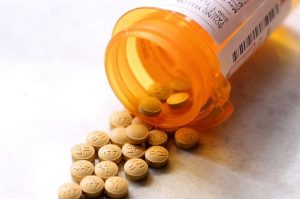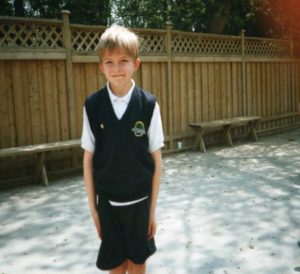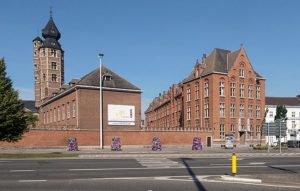Paul’s Story
Case Study Downloads
- Meet Paul (PPT)
- Paul’s Story (Single Slide) (PPT)
- Paul’s Story (DOCX)
- Teaching Notes (In Progress)
Applicable Courses
- Health Promotion and Active Living
- Social Determinants of Health
- Anatomy & Physiology
- Pathophysiology
- Altered Physiology
- Health Research
- Mental Health and Disabilities
Paul’s Story
Paul was born to Gladys and Hugh in 1971 and grew up in an affluent area of Toronto. He had a nanny for his early years. Then, when it came time for him to attend school, he was sent away to a local boarding school. He only came home during summer and Christmas vacations. Once he was in high school, Paul was sent away again.
Paul had a large allowance during his high school years which allowed him the freedom to buy whatever he wanted. He started buying alcohol during his senior year when he went out with his friends. He partied a lot and his grades suffered. He did manage to graduate high school, however, and was accepted to a university in Quebec.
 The party life continued, but Paul found that alcohol was no longer enough to give him the “high” that he craved. He started smoking marijuana and hashish during his second year at university. He no longer came home for summer vacation and spent that time with friends. By third year, Paul was using cocaine and alcohol on a daily basis. He was also struggling with the birth of his younger brother. In 1993, he dropped out of university before the end of third year, as he was failing all of his courses.
The party life continued, but Paul found that alcohol was no longer enough to give him the “high” that he craved. He started smoking marijuana and hashish during his second year at university. He no longer came home for summer vacation and spent that time with friends. By third year, Paul was using cocaine and alcohol on a daily basis. He was also struggling with the birth of his younger brother. In 1993, he dropped out of university before the end of third year, as he was failing all of his courses.
Paul’s parents intervened and sent Paul to a rehabilitation facility. Paul completed the program and went home to his parents. He wandered aimlessly through life over the next number of years, drinking, taking drugs, and revisiting rehabilitation facilities. It was in one of these facilities that he met his first wife in 1999. At the beginning of their relationship, they felt that they truly understood each other and could support each other’s efforts as they both struggled with addictions.
In 2002, Paul and his first wife adopted twin girls: Ella and Olivia. Paul worked odd jobs, but struggled to pay the bills while funding his cocaine habit. Paul’s parents wanted nothing to do with him or his young family. His first wife left him in 2008, taking the girls with her. This seemed to be the wake-up call Paul needed to get his life in order. He joined Narcotics Anonymous in 2009.
Paul was clean and sober for just over a year when he met Nancy. They started dating in 2010. Paul provided Nancy with a full disclosure about his past substance misuse, his previous marriage, and his twin girls. He worked for a construction company and seemed to enjoy it, stating that the physicality of the job helped him to stay clean. Paul and Nancy married in 2012. Shortly after they married, they decided to start trying to conceive. Life was going well for them.
In 2018, Paul had an accident at work, falling from scaffolding 2 stories high. He was taken by ambulance to the local hospital and diagnosed with injury to the ligaments and muscles in his back, along with three torn discs. One of the tears was quite large and required Paul to have a follow-up CT scan in six weeks.
Due to Paul’s history of substance abuse, Flexeril (muscle relaxant) and Ketoprofen (NSAID) were prescribed. He was sent home to rest and recuperate. Paul was not receiving adequate pain management from his prescription medications, so he called his family physician requesting something stronger. After much discussion, Paul’s doctor prescribed Tylenol 3 (acetaminophen 300 mg and codeine 30 mg). Paul was instructed to continue taking his prescribed medications and only take the Tylenol 3 if absolutely necessary. The physician also put the stipulation on the prescription that the pharmacy could only dispense four tablets each day. That meant that Nancy needed to stop by the pharmacy each night on her way home.
Upon arriving home at 7:30 pm on the third day after Paul started the Tylenol 3, Nancy found Paul agitated, sweating, and complaining that his back hurt more. When asked, Paul stated that he had his last Tylenol 3 at 9:00 am. He stated that he had needed them through the night, which left him only one for the day.
Over the next couple of years, Paul struggled with chronic back pain. He started self-medicating with alcohol and any prescription drugs he could get from walk-in clinics, eventually turning to the streets to obtain stronger pain medications. Paul was on long-term disability through WSIB. He was to begin a return to work program in a couple of weeks.
When Nancy’s parents, Jack and Mary, came to stay with them while Mary recovered from her surgery, Paul discovered that Mary had been prescribed Oxycodone-Acetaminophen (2.5 mg-325 mg) for pain. Her physician had prescribed 60 tablets, as she would be out of town for a number of weeks. Paul started sneaking a few pills a day from Mary’s prescription.
It was about two weeks after her parents’ arrival that Nancy noticed that the number of oxycodone tablets was much less than what it should have been. She couldn’t believe that Paul was back to using drugs. Nancy confronted Paul with her suspicions. After arguing for hours, Paul finally confessed to taking the pills.
He stated that he felt overwhelmed with everything going on in his life at the moment:
- Out of work
- Chronic back pain
- Insomnia
- The addition of Sam
- Sam’s diagnosis
- Mary and Jack living there
- Lack of contact and support from his parents
- Nancy going to school and working so much
Despite his relapse, Paul denied having a ‘pill problem.’ Nancy called Paul’s old NA sponsor for suggestions on what to do. Paul was angry at the world, blaming everyone else around him for how his life turned out.
Case Key Words
- Addiction
- Adoption
- Alcoholism
- Back Injury
- Central Nervous System
- Divorce
- Muscles
- Muscular System
- Opioid Addiction
- Opioid Crisis
- Skeletal System
- Support Groups
- Vertebrae



